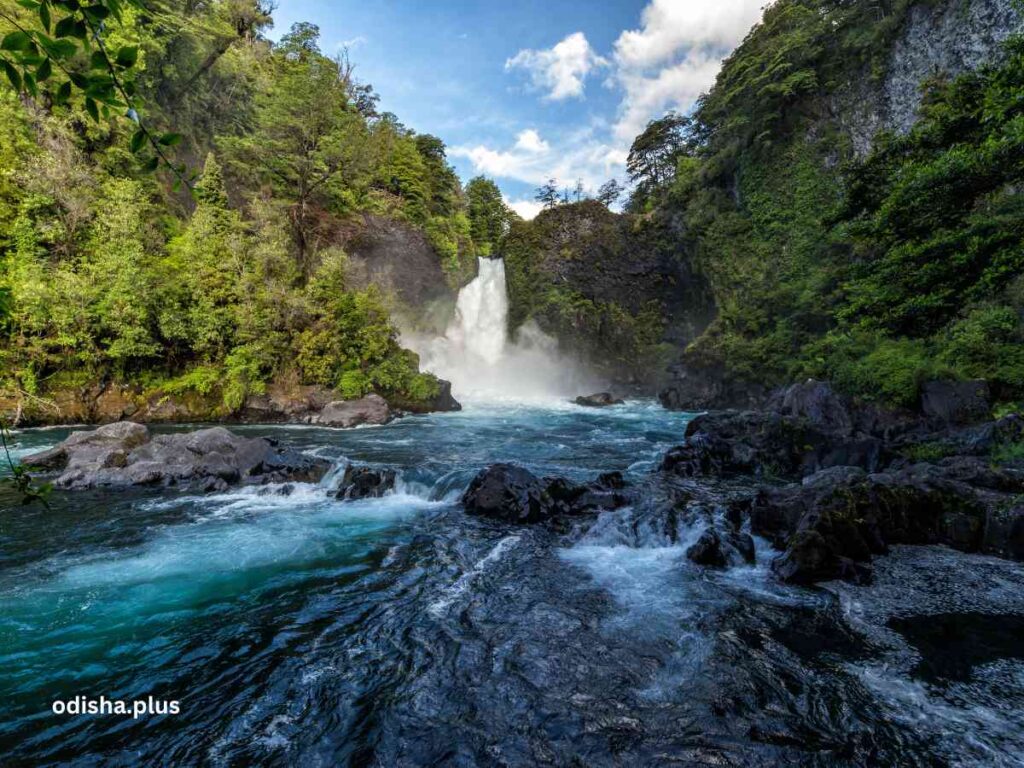The alarming rate of wildlife extinction is a serious global issue
Suresh Chandra Sarangi

The web of life goes on. But the threat persists. We all live in an ecosystem with interconnectedness that sustains life on the planet. Any step to curtail that balance brushes that natural act of nature. We must respect the science of ecology, that sustains the world. Our magnificent wildlife is part of that system, recently in grave danger.
The present generation is bequeathing an endangered heritage, with challenges coming from all corners, at one side the predators, and at the other side the human greed. Of late the burning of California jungle or the bushfires of Australia and the loss of the Amazon rainforest, is a bad omen that threatens our biosphere, with vengeance, because of climate change.
The magnificent tiger, the elephants, the incredible care and their habitat, the Amazon. The Sea otter and all others are gradually vanishing, posing a great threat to our biodiversity. It is an underlying fact that throughout history, man has been the greatest disruptor, spoiling the ecosystem and upsetting the balance of nature. The green wars to preserve nature’s flora and fauna and their conservation have already begun, though too late.
Living Planet Index
The rapid decline of wildlife populations from the face of the Earth is a matter of concern. In 2022, there was a survey made for the Living Planet Index, which said that 83% of species are now endangered. The study was done by the Zoological Society of London. That reveals some startling information like 69% of freshwater vertebrates are declining like never before in the populations of mammals, birds, amphibians, reptiles, and fish since 1970.
In 50 years, more than 2/3rd of the existing wildlife fauna has declined. The scale of decline is devastating. This arises due to loss of habitat, poaching, and fishing. It has been observed that the animal species are fearful of human voices, sound, etc for which they are going into the deep forest, and are afraid of free movement. This is true of 95% of species on the Earth.
Though they exhibit their anger and aggression, the fact remains that they are a dreaded lot. As regards India is concerned, it faces the loss of 20% of the species within 20 year span. It is but natural that biodiversity is a part of our ecosystem, and with a well-diversified ecosystem, and species diversity, there is greater resilience and freedom for the ecosystem to survive.
Disturbances, noise, pollution, dust, floods, and jungle fires are the root causes of such a decline in animal species. In an estimation, it is found that 150 species are lost and that is quite phenomenal. The estimation further predicts that the world’s ocean will be dry of fish and 8 plant species are in danger of extinction in four decades. The rate of extinction is alarming, and the extinction rate over the last 50 years has surpassed all natural rates earlier.
Therefore, it becomes a global responsibility to protect the wildlife, for our survival. Asian rainforest, tropical rainforest, and Amazon rainforest, mother to all species are shrinking, and therefore, the animal species. It is not that the animal species are orphaned totally but some dedicated people are working tirelessly to protect the species, despite the apathy of the government.
However great the individual exercise to protect the species is concerned, without making it a mass movement or definite government support, nothing tangible can be gained. The honey bee experiment is a groundbreaking exercise in this regard, and as Sadguru would explain it, when honey bee species would be extinct, human civilization may face its extinction itself, down the years, because they are involved in the process of cross-pollination.
Recreating Habitat
The rarest of rare species struggle to exist. This is because the natural environment for animal conservation is degrading. Forest lands have been encroached on and have turned into their natural habitat. Although conservationists are trying to recreate habitat, if it is not a naturally selected environment, it may disrupt their breeding and increase in population. A conflicting situation arises among conservationists, as to which species to save and which species to be allowed for extinction if cannot be preserved at its worst.
However, it is to be understood that wildlife exists, side by side with human progress, and how to relate a symbiotic condition that one does not encroach in another’s territory. Therefore, humans, societies, and governments must try to foster sustainable practices for the repopulation of these species. And special efforts are required to save the most vulnerable species, within the ambit of law.
Sometimes, excess growth in the number of some species creates hazards, For example, in Australia, in an attempt to control the accelerated growth of rats, feral cats were used. The basics of the ecosystem hinge on two things. If tigers are not there then the herbivores’ animal numbers will grow, destroying agriculture. Therefore, God has created each species that are complementary to each other. But an excess growth in some species means there is danger for other species and the natural balance of nature is maintained.
Another example is from the US, during 1930, when there was the extinction of a species of wolves, the deer grew in numbers, destroying cultivation and trees. As trees were devoured and then died, thereafter flooding in the area led to mind-blowing soil erosion. A particular size of birds also declined due to the loss of habitats. As a result of which, the insects and mosquitoes increased as the birds earlier were preying upon them. Then the wolves were reintroduced to safeguard the ecosystem.
To cut the story short, nature maintains its balance and human interference upsets that balance. Today, more and more people are conscious of saving the polar bear, or tiger as in the scheme of nature each has a role to play as a part of God’s creation. There is a growing recognition, of late, that from the magnificent butterflies to the elephant on the land or from the whale Rhinos in the water need their place on God’s earth.
What has been more tormenting is the vanishing prairie in fabulous forests of the Amazon. The rain forest, the polar ice caps, the invincible desert, Australia’s ocean, and France’s Flamingo were once upon a time, the beautiful natural sanctuaries for the predators as well as insects. What does all this say? No animal lives in isolation but rather in interconnected interrelationships. The other components of nature are soil, plants, animals, insects, and reptiles, which matter for peaceful coexistence. And so far we have learned that if any of this is altered like the strands of DNA, it has its effect elsewhere.
Each animal has a natural habitat and it adapts to that. Any change to that habitat creates disruption. Pesticide contamination is the latest danger. The Silent Spring, a book by environmentalist Rachel Carson, brought consciousness regarding how misuse or overuse of DDT, a pesticide used by soldiers in World War 2, created havoc by killing the rats, snakes, and deer who ate the corn wheat or paddy, etc and after a furious protest by Rachel Carson, use was completely banned.
Therefore, Rachael Carson is known as the first environmentalist who protected nature against its rapacious exploitation. The book ‘One Straw Revolution’ by Japanese agriculturist Masanobu Fukuoka is a wonderful book about traditional farming, without any intrusion into our biodiversity, soil health, and micro-organism.
Unrestrained Development
The unbridled development in India, without break, has changed our urban, rural, and forest landscapes. The rivers are not left either. This is a story in the name of infrastructure throughout the world and India has borrowed that model. World famous scientists said that there are main four causes of the extinction of wild species. Dams, coal-fired power projects, limestone mining, and diversion of forest land for a high-power transmission line, like that of Chandaka reserve forest have led to the extinction of that natural habitat for the wild animals. Sometimes, the voice of high carbon-oriented growth argues for less use of carbon-induced growth, for easy access of the poor to energy.
The Green Peace Movement says the growing rich consumer class of India is responsible for the production of 4.5 times more carbon emissions than the poorer persons and 3 times more than the global average. In such a situation, nature suffers the most, due to mindless exploitation and more sufferers are its wild animal world and more species. A WWF study says that if we continue business as usual, then we may need two living planets by 2030. The UN sustainable development goal speaks of maintaining a balance between nature and human development.
The story goes on. The green war has already started. Our blue planet faces suffocation due to human follies. Our model of development is wrong. Man vs Nature is the latest war. The dispatches of a vanishing world due to the extinction of species is a poignant story of the struggle for survival. Of course, a lot has been initiated to reverse the process. The Himalayas, the roof of the world is no different story.
The suffocated and burnt wildlife and flora and fauna of the Australian bush fire, the fire in the Amazon, the lungs of the world, and the recent fire at Los Angeles are bright examples and a grim reminder that our wildlife is facing great extinction. The wild polar bear never dances anymore, the songs produced by the little birds are not heard now and the honey bee is silent. Our misplaced priorities are up against wildlife and nature. Let us protect our planet Earth, as there are no two but only one planet.
(The writer is a former General Manager of Bank of India and currently a visiting professor at KIIT School of Management. Views expressed are personal.)



























